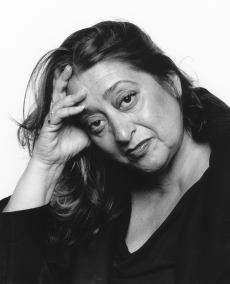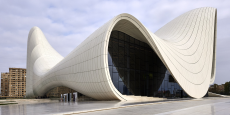
Email: emanuelealbertocirello.98@gmail.com
Total Article : 76
About Me:I am a Year 13 student which aspires to be an architect. I am interested in anything I don't yet know, and I mostly write about art, politics , Italian culture and inspirational people, although I will try to write for as many categories possible, just to test myself and get to know more things.

Zaha Hadid is the most famous woman in the history of architecture and one of the most influential contemporary architects. She has been the first woman to win the prestigious Pritzker Architecture Prize, the architectural equivalent of the Nobel Prize, due to her innovating and nonconformist approach to design. Some of her most memorable buildings include the London Aquatics Centre, the Guangzhou Opera House, the Heydar Aliyev Cultural Centre in Baku and the Riverside Museum in Glasgow.
Zaha Hadid was an Iraqi born and British naturalised architect born in Baghdad in 1950. In the 70’s she achieved a degree in mathematics at the Beirut University, Lebanon, and came to London to study architecture at the AA School of Architecture. In 1980, she opened her first studio and receives her first important award in 1983, for the design of The Peak Leisure Club in Hong Kong. The project, which was not built, shows a particular interest for conceptual drawings that highlight, even through painting, a special creativity, which had the unique aim to surpass the spatial limits and boundaries, shifting away from classic parameters.

This peculiar approach characterises the trademark of Zaha Hadid’s work, and has brought to numerous retrospectives of her projects, including sketches, paintings and animations, to be exhibited in contemporary art museums, such as the MOMA and the Guggenheim. What made Hadid stand out the majority of contemporary architects was also the exploitation and use of advanced technologies, which have allowed her to make most of her work considered impossible a few decades ago. Her designs, which were exhibited at the Guggenheim, reflect a personal fantasy of neo-futurism and seem cartoonish and not as intricate as we may thin. Her vision made her become an architect who would build for an ideal and utopic world, which has influenced the style of many contemporary architects.
Her firm Zaha Hadid Architects has been running for over 30 years, employs around 400 people, and works on thousands of projects across the globe. It is leading firm that, with imposing structures, express lightness, fluidity and clarity due to the smart use of a variety of materials (ranging from glass, plastics, titanium and stainless steel).
Many of her most ambitious projects, however, are still in progress, like a stadium in Qatar where the 2022 World Cup will take place. According to many people, the design embodied Hadid's latest architectural exuberant impulses, due to its sculptural virtuosity at the expense of logic and efficiency, and cultivated her celebrity status, which often seemed to isolate her work from all forms of critical debate. Hadid, on one side, decided to follow her artful architectural theory - with all its abstract implications - but on the other signed consumer products such as candles, ties and tableware. She has worked regularly and with enthusiasm in countries with authoritarian governments, planning for their expensive and spectacular cultural centres and other projects designed to flaunt architectural norms.
Prior to her death, at the relatively young age of 65, she was imply known as Zaha. This shows the importance and affluence that she had in the architectural industry, and shows her success over a man-dominated field. This makes her career even more precious, and her legacy, which will be valued in the next few years, can either be acclaimed or criticised, but surely she will be remembered for years to follow as one of the most important architects of the 20th and 21st century.
Image credits: http://conversations.aaschool.ac.uk/wp-content/uploads/2016/04/Zaha_HadidValerie_Bennett_2002_.jpg
http://media.architecturaldigest.com/photos/56ba787ca254b168296a8fff/2:1/w_2560/zaha-hadid-architecture-01.jpg

0 Comment:
Be the first one to comment on this article.